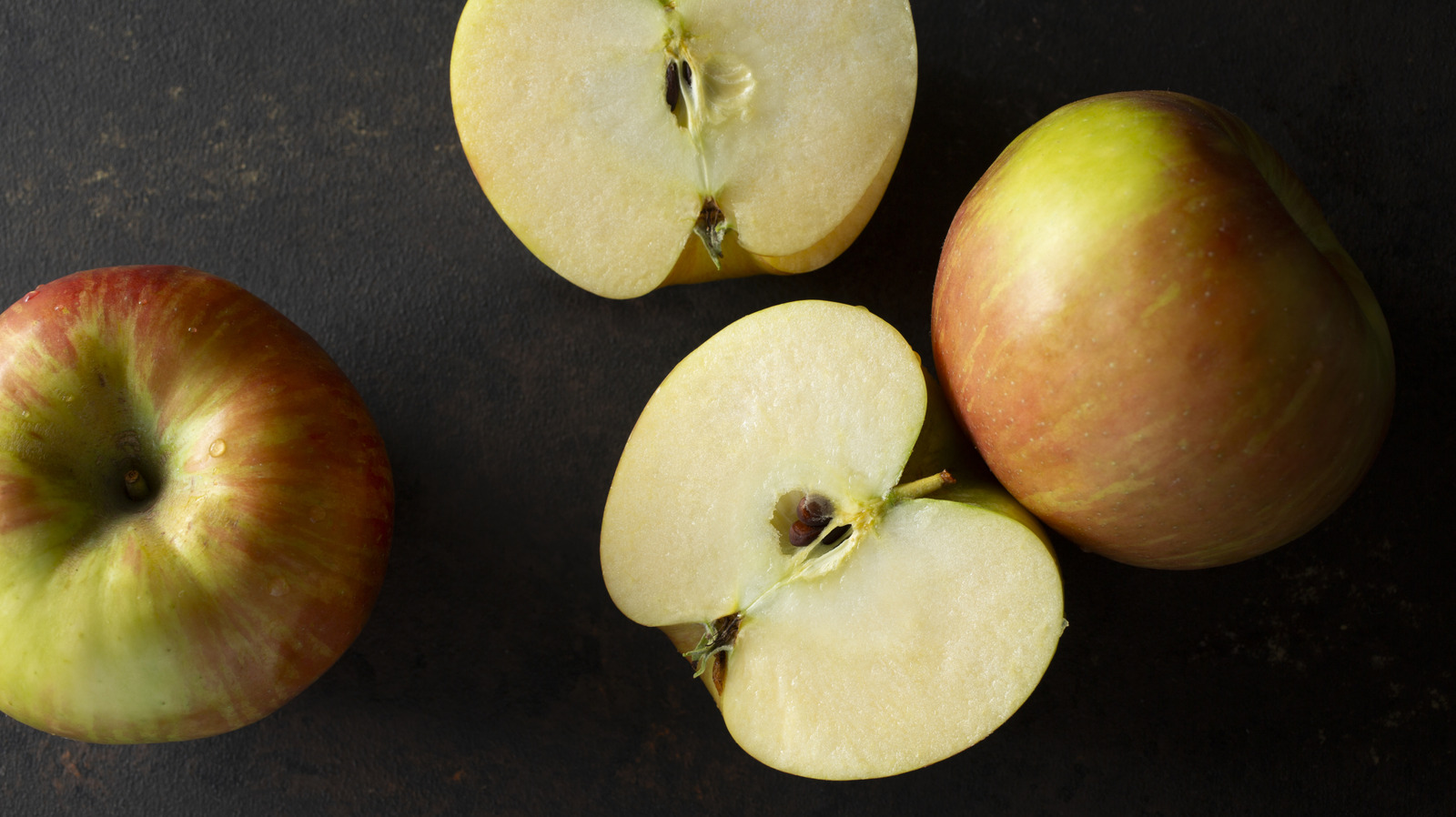“One bad apple spoils the bunch,” or so the saying goes. But what happens when a bunch of bad apples spoils the one? Well, that’s what seems to be happening with the once-beloved Honeycrisp.
The ideal Honeycrisp is truly a thing to behold: sweet and juicy with a thin skin that practically pops when bitten into. Its taste is an ideal blend of sweet and tart, perfect for snacking, baking, or even stacking onto, say, a turkey and brie sandwich.
In the halcyon days of Honeycrisps, in the 2000s and 2010s, you could find flavorful heaps of them at the grocery store, each one bursting with flavor and costing more than your average apple. The variety shook the roots of the apple market, and in recent years, other “crisp” varieties have joined Honeycrisps as an alternative to the waxy (and once ubiquitous) Red Delicious and sour Granny Smith.
However, the quality of Honeycrisp apples appears to have dipped, at least according to many former Honeycrisp enjoyers. For many apple aficionados, Honeycrisps have become mushy, mealy, and bland. This, ironically, comes at a time when Honeycrisps are more available than ever.
So why has this once stand-out apple variety dipped in popularity and taste? Well, its very popularity may be the cause of its waning quality, as the once sweet and tangy apple, though delicious, was not bred to accommodate the popularity of its uniquely flavorful taste. Let’s dig into the tragic tale of the Honeycrisp, an apple too sweet for its own good.
How Honeycrisp came to be
As far as apples go, Honeycrisps are a relatively new variety. The fruit was first discovered in 1983, when David Bedford, an apple breeder working at the University of Minnesota, came upon an apple tree that was a cross between a Keepsake apple and an unnamed variety. The tree was a scientific failure, as it didn’t pass the university’s assessments for winter readiness. However, When Bedford tried the fruit, he found it to be intriguing. So the tree was kept on, and would eventually lead to the production of what we now know as the Honeycrisp apple, which was first introduced to markets in 1991.
The origins of the Honeycrisp weren’t exactly commercial. In fact, Honeycrisps were, from the very start, a scientific endeavor. They were developed as a part of an ongoing project run by the University of Minnesota, which focuses on developing crops that can withstand the Midwestern state’s harsh, cold climate. When Honeycrisps first hit the market, they were patented by the University of Minnesota. The trees were planted in farms across the Midwest, but mostly in Minnesota and Michigan.
However, there were two main factors that contributed to the apple variety’s success. Once the trees began to be cultivated in Washington, a linchpin in nationwide apple distribution, Honeycrisps became more broadly available. Additionally, when the patent for Honeycrisps expired in 2008, farmers could more easily grow the fruit on their own.
A wonderful but persnickety fruit
Now, this may seem like an agricultural fairytale — an almost rejected apple goes on to become one of the most popular varieties of the fruit on the market. However, even though Honeycrisps are undeniably tasty, they are also incredibly difficult to grow and store on a large scale. Ironically, many of the things that make Honeycrisps so good also contribute to their less than hearty nature.
For starters, that thin skin, so great for biting into, makes it easier for the fruit to be pierced, either by its stem or branches or in the harvesting and storage process. This can lead to premature spoilage. Its thin skin also makes the fruit prone to burning in the sun. Honeycrisps are also prone to a condition called bitter pit, which can cause brown spots within the apple.
The apple variety is also more difficult to store for long periods than, say, a Red Delicious. Honeycrisps must be tempered before refrigeration, a several-day process that makes Honeycrisp storage labor- and cost-intensive.
However, it seems that many apple producers have pushed past these limitations, and Honeycrisps are now widely produced and available year round, despite their September to February season. With this new Honeycrisp ubiquity, the quality of said apples has become more spotty due to longer storage times.
Too much of a good thing
So, the key to Honeycrisp’s success also contributed to its now mushy and bland reputation. It seems that the Honeycrisp is a prime example of “too much of a good thing.” And in recent years, demand for the apple has tarnished considerably, with many apple suppliers reporting a surplus in Honeycrisp supply that signals waning appetites for the variety.
Still, all is not lost for fans of the crisp. Since the patent has expired on the fruit, new Honeycrisp varieties have come to the market. Apples such as the Cosmic Crisp, which is a mix between the Enterprise variety of apples and Honeycrisp, have made waves. Many of these new varieties are patented (for example, Cosmic Crisp’s patent is owned by the University of Washington, and it is only grown in the state of Washington). This means there is stricter quality control. The new apple variety is also hardier than the Honeycrisp, lasting up to a year in storage.
So maybe there is no going back to the Honeycrisps of yore. However, thanks to the surprisingly successful apple, there seems to be a new scene-stealing variety popping up every few years, each one promising a new twist on the staple fruit.







